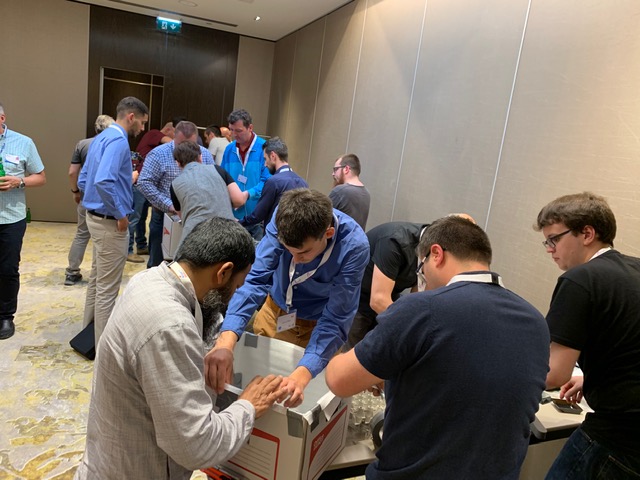Managing hatcheries for the highest chick quality and performance was the key topic during the seventh Hatchery and Incubation Management Module of the Aviagen Production Management School for Europe Middle East and Africa (EMEA). For the fourth year in a row, Aviagen hosted the Hatchery and Incubation training in Budapest, Hungary, where the poultry industry is well-developed and growing. Taking place May 24-30, the course provided a good balance of classroom learning and real-world practice as well as networking.
Incubation Specialist Eddy van Lierde kicked off the module with an interactive incubator-building exercise, which was popular among students. In their makeshift incubators, students placed fertile eggs that they diligently cared for and monitored during the entire week.
Some of the featured topics critical to effective hatchery and incubation management were:
· Fertility and hatching egg care
· Science of incubation
· Ventilation, calibration, hatchers
· Incubation, chick quality and growth
· Data handling and analysis
· Biosecurity and problem solving and prevention
New this year to the training was a session in using temperature data loggers – portable measurement instruments for recording temperature over a defined period of time. The data loggers offer big advantages over hand-held thermometers in that they can measure temperatures while the incubator is running with the doors closed and the turning operating normally.
The course concluded with a case study in incubator management, where each team was given a dossier of data describing a hatch failure, and was asked to identify the cause, give proof to support their conclusions and offer advice on how to prevent a recurrence. This study provided useful practice in troubleshooting and effective management.
Aviagen’s Global Manager, Hatchery Development and Support Dinah Nicholson explained the value of the training. “We’re committed to sharing the latest management developments to ensure customer success. During this Module we explore with our students the unique needs of a developing embryo during incubation and the conditions that provide the best hatchery performance possible”.
The 2019 Hatchery and Incubation Module welcomed 36 participants from 18 countries. “I had a wonderful time at the training in Budapest,” said Espen Sørlie from Nortura, Norway. “The highlights for me were the model-based ventilation session, use of the pivot table and embryo development and turning during egg storage. Even though we already use temperature logging, I was still able to learn some new techniques that I’ll be able to apply to my work at home,.
Claire Parmentier from Chêne Vert Conseil, France, also commented: “The most beneficial take-aways from the course for me were the useful hatchery tips from the tutors, which I’ll be able to use when I perform my audits in France. The well-documented presentations with published data were very powerful, and the ventilation and air flow sessions, using the four prototypes, as well as the practical field exercises, will be extremely helpful to me in my future work. I’d like to add that I bought data loggers a month ago and didn’t know how to use them, and I’m now ready to put them to work in optimizing hatchery environment.”
“From the presentations on temperature and ventilation, to the construction of a model incubator – the course was excellent. I especially enjoyed the camaraderie and enlightening discussions with the instructors and my industry colleagues,” added Ohad Avrahami from At Group, Israel.


